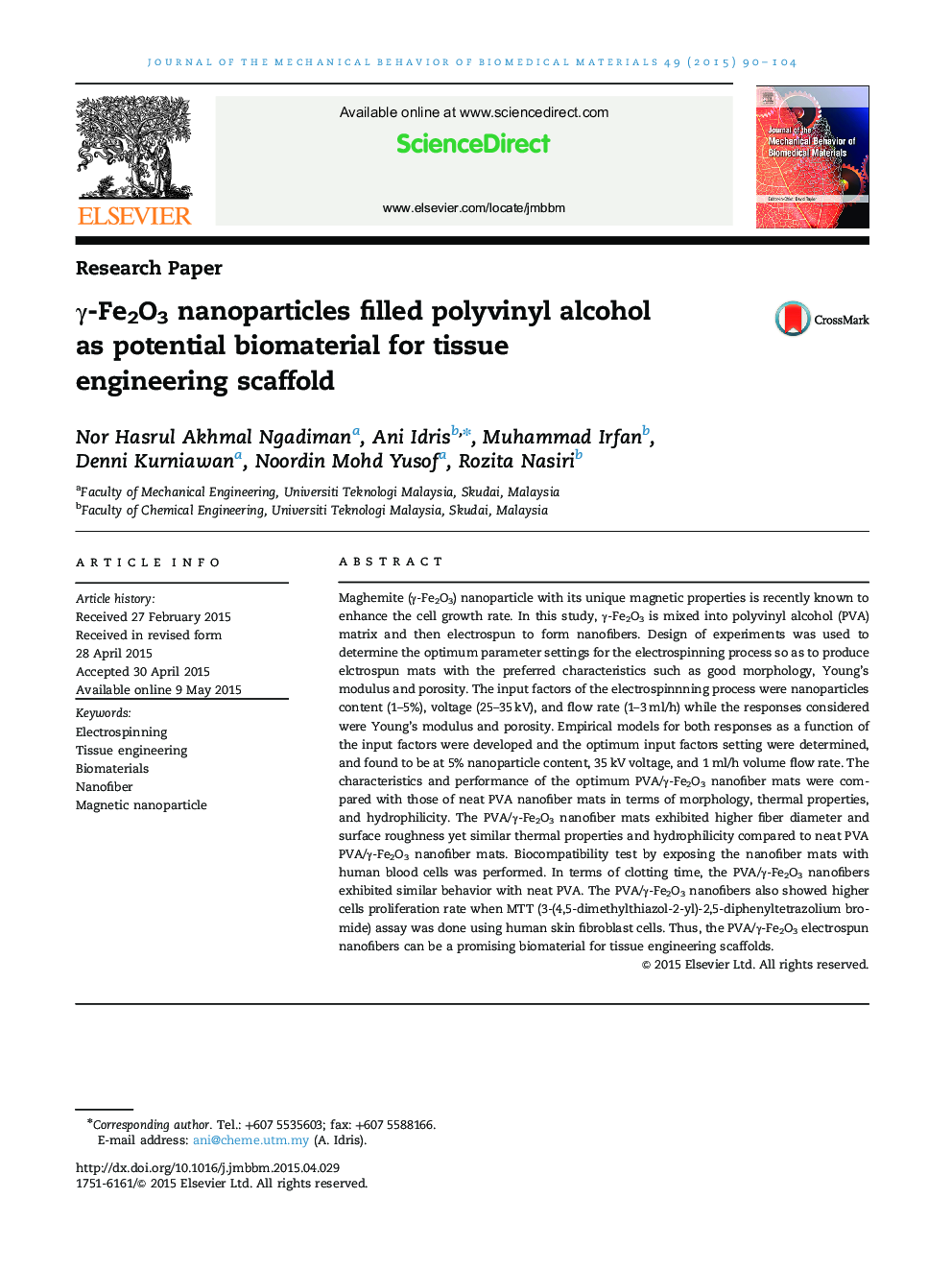| کد مقاله | کد نشریه | سال انتشار | مقاله انگلیسی | نسخه تمام متن |
|---|---|---|---|---|
| 810587 | 1469096 | 2015 | 15 صفحه PDF | دانلود رایگان |

• γ-Fe2O3 was mixed into PVA matrix and then electrospun to form nanofibers.
• Optimum parameter settings of electrospinning process were determined using DOE.
• Variables; np loading, flowrate and voltage, response; Young’s modulus and porosity.
• Best fiber was produced at 5% np content, 35 kV voltage and 1 ml/h volume flow rate.
• PVA/γ-Fe2O3 nanofibers exhibited higher cells proliferation rate with MTT assay.
Maghemite (γ-Fe2O3) nanoparticle with its unique magnetic properties is recently known to enhance the cell growth rate. In this study, γ-Fe2O3 is mixed into polyvinyl alcohol (PVA) matrix and then electrospun to form nanofibers. Design of experiments was used to determine the optimum parameter settings for the electrospinning process so as to produce elctrospun mats with the preferred characteristics such as good morphology, Young’s modulus and porosity. The input factors of the electrospinnning process were nanoparticles content (1–5%), voltage (25–35 kV), and flow rate (1–3 ml/h) while the responses considered were Young’s modulus and porosity. Empirical models for both responses as a function of the input factors were developed and the optimum input factors setting were determined, and found to be at 5% nanoparticle content, 35 kV voltage, and 1 ml/h volume flow rate. The characteristics and performance of the optimum PVA/γ-Fe2O3 nanofiber mats were compared with those of neat PVA nanofiber mats in terms of morphology, thermal properties, and hydrophilicity. The PVA/γ-Fe2O3 nanofiber mats exhibited higher fiber diameter and surface roughness yet similar thermal properties and hydrophilicity compared to neat PVA PVA/γ-Fe2O3 nanofiber mats. Biocompatibility test by exposing the nanofiber mats with human blood cells was performed. In terms of clotting time, the PVA/γ-Fe2O3 nanofibers exhibited similar behavior with neat PVA. The PVA/γ-Fe2O3 nanofibers also showed higher cells proliferation rate when MTT (3-(4,5-dimethylthiazol-2-yl)-2,5-diphenyltetrazolium bromide) assay was done using human skin fibroblast cells. Thus, the PVA/γ-Fe2O3 electrospun nanofibers can be a promising biomaterial for tissue engineering scaffolds.
Figure optionsDownload high-quality image (178 K)Download as PowerPoint slide
Journal: Journal of the Mechanical Behavior of Biomedical Materials - Volume 49, September 2015, Pages 90–104